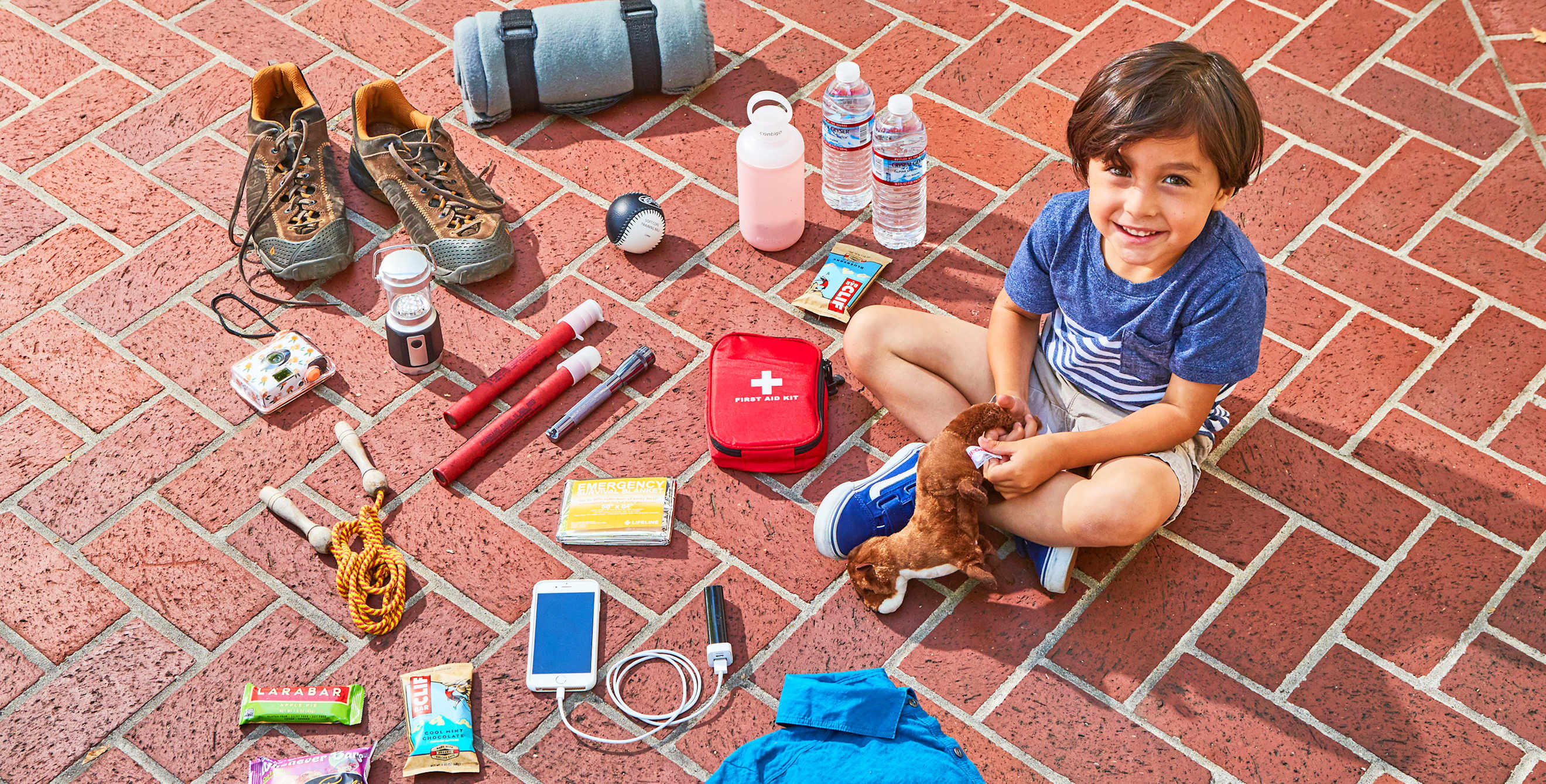
How to Pack a Car Emergency Kit
Gather these essentials for on-the-road safety and peace of mind.

Roadside emergencies are hard to predict. But it’s easy to be prepared for them by putting together an emergency car kit.
"Becoming stranded on the roadway not only puts a damper on your travel plans but can create a hazard for yourself and others on the road," says Aldo Vazquez, AAA NCNU spokesperson. "Stay ready and safe by anticipating the unexpected.”
Of course, whatever roadside trouble you run into—whether it’s a flat tire on a city street or a stall on a rural lane—you can always call AAA for emergency roadside assistance. But keeping a few essentials in your vehicle can provide safety, comfort, and peace of mind until help arrives.
To build your emergency car kit, start by considering the basics: safety, warmth, sustenance, and communication. Next, take into account the season and the conditions in which you’ll be driving.
“During cold winter months, consider including additional blankets as well as thick socks, gloves, boots, and a warm hat,” says Chris Hohnbaum, AAA Field Operations Manager and Emergency Road Service expert. “In summer, swap those items for cooling towels, a baseball cap, and sunscreen.”
No matter the weather, there are certain items no vehicle should be without. Some should be stashed in your glove compartment within arm’s reach. Others should be stored in the trunk (perhaps in a backpack, in case you need to leave the car and travel on foot).
Here’s a handy checklist of emergency car kit musts—and where to keep them in your vehicle.
What to Keep in Your Glove Compartment
- Properly fitting cloth mask for every member of your household
- Disinfectant wipes and hand sanitizer
- Battery-powered cell phone charger
- Pen and notepad (for swapping information in the event of a collision; writing down emergency phone numbers; or jotting down mile markers, geographic features, or other landmarks to help emergency workers locate you)
- Tire gauge (check pressure once a month; keeping tires properly inflated is important for performance and for safety)
- Paper maps of unfamiliar places you’re traveling (in case GPS is unavailable)
- Flashlight
What to Keep in Your Trunk
- First-aid kit (including gloves, bandages, antiseptic ointment, bug spray, tweezers, and gauze pads)
- Warning triangles or flares
- Reflective vest
- Jumper cables
- Jack, lug-wrench, flat board to place under the jack, and other tire-changing tools
- Motor oil (a quart or more)
- Coolant (a gallon or more)
- Empty gas can
- Drinking water (in non-plastic containers such as sealed glass bottles, metal cans, or reusable water bottles you bring along each time you drive) and a portable water filter
- Electrolyte drinks
- Protein bars or other nonperishable snacks
- Warm blanket (such as a space blanket)
- Rain poncho
- Sturdy shoes (in case you need to walk over rough terrain)
- Small tool kit (screwdriver, pliers, and a wrench)
- Extra batteries for flashlight and cell phone charger
- Duct tape, cable ties, and fuses (for stopgap repairs until your vehicle can be professionally serviced)
- Hand-crank radio (particularly important during a natural disaster like an earthquake)
- Lighter or matchbook
- Seasonal gear (such as snow chains, ice scraper, and/or a small shovel, in case you have to dig a tire out of the mud or snow)
It’s also a good idea to check your emergency kit four times a year—and before any road trips—to make sure that your provisions, such as water and snacks, are fully stocked and batteries are charged. Battery life can vary widely depending on a range of factors, including temperature and weather, so replace them at the manufacturer’s recommended intervals. Some emergency flares have a shelf life, which is listed on the packaging; replace accordingly.
Whenever you check your kit, take a peek at your spare to make sure it hasn’t gone flat. If you don’t have a spare, consider adding a can of Fix-a-Flat or a handheld portable air compressor to your kit.
Hohnbaum also recommends re-acquainting yourself with your owner’s manual. “In the event of a roadside emergency, it’s always helpful to be familiar with your vehicle,” he says. “For instance, not all batteries are under the hood these days. Know where to find yours in case you need a jump.”
Smart Tip: Save time by purchasing a pre-made kit from Ready America, then add items as required for your specific needs. The Road Warrior Deluxe option includes a 54-piece first aid kit, a 14-in-1 pocket tool, and solar blankets, among many of the other necessities. AAA Members can get up to 30 percent off select Ready America products.